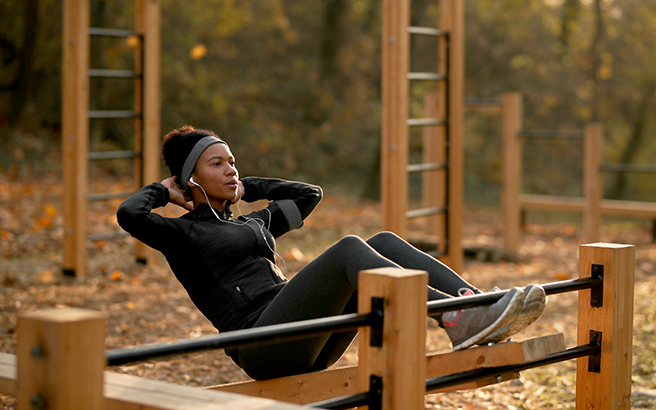At World Cancer Research Fund International, we believe everyone should have access to physical activity opportunities, no matter their age, gender, ability, socio-economic status or geography. One in four adults globally does not reach the recommended levels of physical activity. This has significant implications for health and the risk of cancer. But what stops us from being physically active?
A fragmented physical activity system
The COVID-19 pandemic has highlighted the importance and benefits of physical activity for mental and physical wellbeing as well as in the disease’s outcomes. It has also exacerbated unequal access to physical activity opportunities, with the most vulnerable people often left behind, including women, minority ethnic groups, disadvantaged communities, and people living with disability and chronic disease. England’s Active Lives study found that between May 2020 and May 2021, 75% of people with disabilities, 52% of Asian people and 48% of black people were inactive, numbers which are rising every year.
The fragmented physical activity system has led the World Health Organization (WHO) to publish an advocacy brief called Fair Play, which recognises the key barriers that limit global progress, namely:
- insufficient and unequal investment
- inadequate and misaligned policy and regulatory frameworks
- uneven and fragmented partnerships and programme delivery
Generating action
To accelerate progress, WHO calls for all countries to deliver sustained public education including communication campaigns, supportive environments that provide safe, affordable access to facilities, and diverse, affordable and inclusive programmes and opportunities to enable people to be active in safe and enjoyable ways.
Many people are unable to access these opportunities for a range of reasons such as not being able to afford sports club membership fees, equipment or sportswear. Some activities need to be adapted or made more accessible so that people living with disabilities can participate. Many people live in communities that are unsafe to walk and cycle in, with few or no sport facilities or exercise programmes and poor access to public open spaces such as parks and gardens. The importance of open spaces was highlighted when, due to the pandemic, gyms were closed and most physical activity had to take place outside.
What are countries doing to remove barriers?
We are already starting to see pockets of action happening around the world, but implementation is not widespread or consistent. However, there are some great examples across the globe that countries can take inspiration from – which can be found in our MOVING database.
In Ireland, the Women in Sport programme and the Love Sport campaign were established to target women and girls of all ages, ethnic and socio-economic backgrounds and abilities, to increase the visibility of female role models in sport.
The Netherlands has focused on developing a supportive environment to provide affordable access to facilities, as well as a Youth Sports Fund which helps children to join a sports club where affordability is an issue.
An open goal
Fair Play highlights that to achieve the full potential of physical activity, it can no longer be viewed as a ‘nice to have’ component of public policy; it should be seen as a policy win-win and a must have. Only then will the physical activity system be able to provide a healthier and more equitable playing field for all.
Fair Play also highlights that a range of actors are needed to deliver a functioning physical activity system. At World Cancer Research Fund International, we are collecting information on community initiatives and programmes with specific focus on the least active groups, and vulnerable and marginalised people, policies promoting professional training on inclusive sport as well as mass communication campaigns to change social norms about discrimination and gender equality in sport. Our MOVING database seeks to give a global picture of action and serve as resource to drive policy design and implementation.
Moving forward, we are designing a benchmarking tool to analyse the strength of policies promoting equal access to physical activity opportunities – more to come in 2022. We want to play our part in supporting global efforts to help the world become more active and reducing the risk of cancer.
> Learn more about how the built environment influences our physical activity levels

